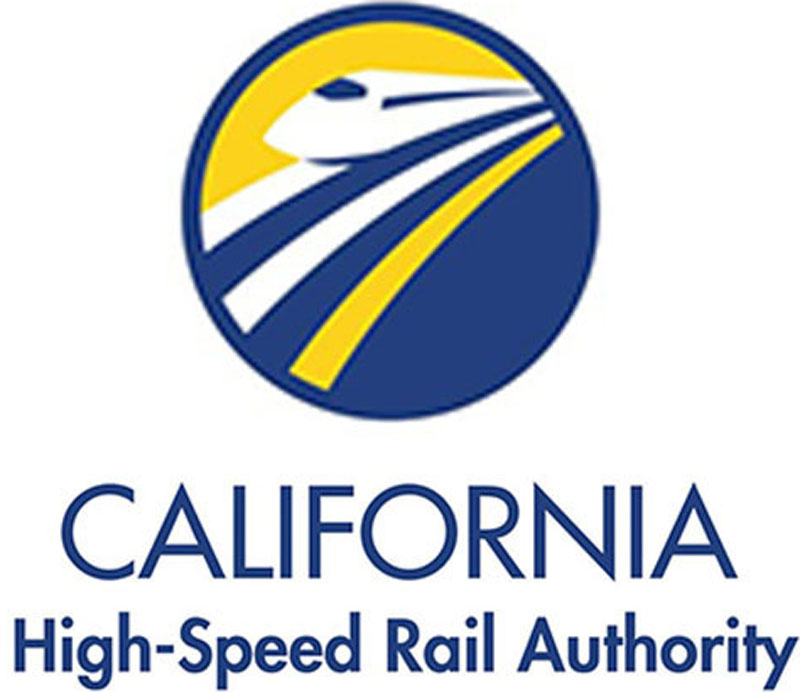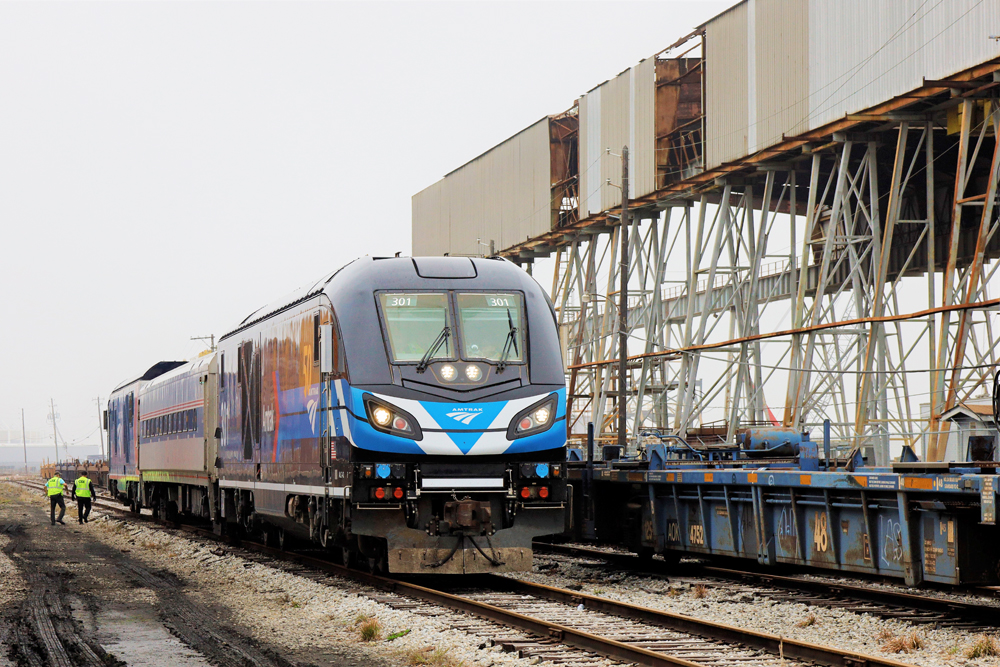A 25-page letter to the California High Speed Rail Authority’s CEO, Brian Kelly, lays out problems with the project including: the authority “consistently and repeatedly failed in its management and delivery of the Project, and in meeting the terms and conditions of the [2010] Agreement, all of which constitute violations of the … Agreement.”
The announcement Thursday from the Federal Railroad Administration makes cements a determination the agency made in February that the project is unlikely to be completed by 2022 — an already extended deadline.
The news comes amid criticism, specifically from an auditor’s report that details missteps and cost overruns that California high speed rail managers inflicted on the project, almost from the beginning.
A 2010 agreement between the U.S. government and the state of California had U.S. taxpayers footing the bill for $928,620,000 for what was a $25 billion project when proposed in 2000, but quickly grew to at least $77 billion earlier this year.















We will never have HSR in this country within a couple years we will have no intercity passenger rail & Brightline will be broke within 5 yrs. On the bright side we won’t have to pay for a Hudson river tunnel a bigger waste of money than this project would ever be. They can pave over the NEC and run buses on it. Much more cost effective.
I want to claarify my earlier point. By stating how many people the I-System carries and how few railroads carry, it doesn’t mean I’m anti-train. My point goes to the cost comparison. We can’t compare the cost of added freeway lanes, to passenger rail, without looking at the differential in terms of passenger miles.
I’m still stung by the cost of the proposed MBTA Stoughon – Taunton link, a branch line. Let’s compare two roughly parallel routes both in Massachustts and both in the same two counties, Norfolk and Bristol. The 1960’s cost of Route 95 (an all-new six-lane interstate highway through suburbia) from Canton, through Norwood, Sharon, Foxborough, Mansfield and Attleboro, to the Rhode Island state line, about 25 miles, then adding inflation (say ten to one) likely wasn’t all that much more money than the proposal for restoration of few miles of single track railroad Stoughton to Taunton. For a thousand or so passengers a day.
People on this forum are free to advocate for passenger rail. In doing so be very careful before claiming a rail line will substitute for added freeway lanes.
For MacFarlane, I actually live in California. I have even driven between Bakersfield and Merced dozens of times on US 99. I can absolutely assure you there is no huge demand (probably zero demand) by commuters between Bakersfield and Merced. Bears traveling up to Yosemite might use it though and hitchhike the rest of the way to the park.
There is a general problem with commuter transportation, it only gets used twice a day, five days a week. The rest of the time a lot of very expensive infrastructure is idle.
The general problem with commuters in California is that cities here have no central business district (with the exception of San Francisco) so a train ending in downtown L.A. isn’t very useful. It couldn’t compete with direct flights to Orange County, Burbank, Ontario,…. for business travel and it would be too expensive for leisure travel (an L.A. – S.F. car trip of about 400 miles at even 20 miles to a gallon would cost about $ 80, a fraction of rail tickets even including maintenance).
Re: the I-system carries lots of people.
I suspect the best that passenger trains can do in the US is to keep the interstates from further decimating the cities. Where vehicle pressure is causing a demand for further destruction, other forms of transportation could be used to reduce this vehicle pressure. Trains and buses are currently the only “other form of transportation” (and most people seem to hate buses).
(From your stats below) when 130k vpd in Milwaukee County all start trying to squeeze into Milwaukee proper there’s only two options: destroy the city for the car drivers -or- get the car drivers into the city some other way.
Over the past 70 years or so, destroying the city was always the preferred option. It’s was simpler, cheaper, and meaner; so more fun (over all). Nothing like destroying somebody else’s neighborhood for your own commute AND giving the residents the finger every time you fly through at 70+.
But, this era might be coming to end (maybe, tough to say yet) . There’s NIMBY’s everywhere now, AND (much more importantly) the “people that matter” have started to move back into the cities; and the “people that matter” are used to giving the finger not taking it. (It’s the NIMBY’s are giving the finger now.)
You are right tho, trains are never going to move more than a fraction of automobile (or truck) traffic; nothing is more flexible than cars and trucks.
https://www.theonion.com/report-98-percent-of-u-s-commuters-favor-public-trans-1819565837
This is National Infrastructure Week.
John – But the point everyone besides me keeps missing – the I-system carries lots of people. Rairoads don’t. A very busy intercity passenger railroad carries about as many people as a local road, not an Interstate Highway.
So if Cal-HSR doubles or triples or quadruples the passenger count of today’s San Joaquins, compared to the freeway in the Central Valley that’s nothing. Not even a rounding error.
How many times have I posted this statistic: Wisconsin IH 41-94 carries about 130K vpd in Milwaukee County, drops down to 85k in Racine County picks up a bit in Kenosha County then crossing into Illinois gets busier.. Racine County at 85k vpd is the low spot on Hwy 94 between Milwaukee to Chicago and Gary. Amtrak nationwide, San Diego to Maine, Miami to Vancouver, Texas to Chicago, NEW and Chicago corridors and California Corridors and long distance, total, carries 85k daily.
Well, just for comparison….
The cost of construction of the Interstate Highway System was approximately $114 billion (equivalent to $521 billion after adjusting for inflation).
The system is 48,191 miles which is $10,8 M’s per mile (give or take a few F-35 lug-nuts).
The California HSR project will build 119 miles in the California Central Valley, across almost table-flat terrain, at a final projected cost of 10.4 B’s. Which works out to $89.1 M’s per mile (but, this is with electricity).
Now, this isn’t an apples to apples comparison. CA-HSR built miles and miles of bridges in order to span the vast distances of an almost table-flat terrain, which increased the costs unexpectedly. No-one could have predicted the need to build miles of bridges across table-flat terrain. And, it should be noted that the Apollo program cost an incredible $109 B’s (in today’s dollars) which ONLY got as far as the moon, where-as CA-HSR got to Bakersfield.
So, I think we’ll have to wait and see how well Texas does with their HSR (after fighting through the lawsuits funded by those NIMBY’s like Southwest Airlines) before we judge just how much loot can be extracted from the government per mile. I understand that the Transcontinental Railroad was one of THEE most lucrative looting operations ever run on a government (besting even what the Defense industry can do today) but – I’m sure – HSR looters are up the challenge. We didn’t get to be number one in the world with being the best looters in the world too.
As President Gerald Ford once said “this national nightmare is finally over”
As we used to say when playing Monopoly (decades ago) “Prices have gone up!” Restoring an old New Haven (or new Old Haven, whatever) branch line a handful of miles Stoughton to Taunton, and adding the required electrification (although no MBTA trains are electrified, not even on the Amtrak main line) will cost, what was it, a billion dollars? It’s not just California.
Good luck getting any of it back, including this amount…all of it has been spent already…of course, if they really want we can just stop sending our portion of the Federal budget in every year too, that should just about cover the cost.
Robert Ray, it makes complete economic sense…if you knew anything about California(and you should living here), then you know that the fastest growing cities are in the Central Valley, and most of those people moving there work in either the S.F. Bay Area or Los Angeles Basin, they need a way to get to work that isn’t driving…HSR would and will be perfect for that service(and no, you don’t need to stop in every little town, people can drive to one of the main stations, hop on the train then take ride share or transit to the final destination, and usually that transit is provided by their employer). Of course, Apple could pay for the whole thing out of their spare change if they wanted to.
Great news!! Now lets work on getting the $2.5 billion already spent (I mean wasted) back from California. This is a great precedent because in the future all those consultants who see huge fees in promising high speed rail to naive politicians using low cost estimates and high ridership estimates may think twice before they say “Oh, the federal government will pay for it.”
Before I retired from IT, an old axiom was that a poorly planned project would require triple the estimated resources (time & money). A well planned project would require double the amount.
As a California taxpayer,
Yippee!
Somebody in the government (not California’s of course) has some sense. This project was strictly a payoff to the construction and other unions; it never made any economic, or even environmental, sense at all..